Implementation Activities
Agricultural Nonpoint Source Management Measures
Riparian Habitat Conservation Measures
- Solid waste Transfer Stations / Trash Collection Events
- Trash Can Lids at Hazel Bazemore Park
- OSSF Repair and Replacement Application
- OSSF Conversion and Connections to the City of Corpus Christi’s Wastewater System
- Pet Waste Collection stations and Leash Bag Holders
- Storm Water Retention Ponds
- Municipal and Public Utility Districts/Wastewater Treatment Facilities
Agricultural Nonpoint Source Management Measures
- Water Quality Management Plans (WQMP): WQMPs are required for agricultural producers to receive technical and financial assistance from the Natural Resources Conservation Service and the Texas State Soil and Water Conservation Board (TSSWCB), through the local Soil and Water Conservation Districts. At the time of the publication of the Watershed Protection Plan (WPP), there were 47 certified WQMPs within the Lower Nueces Watershed in Nueces and San Patricio counties.
One additional WQMP was certified in Jim Wells County in 2017, and one additional WQMP was certified in San Patricio County in 2018.
The TSSWCB maintains regional offices in strategic areas of the State to administer the WQMP Program. For more information, visit the TSSWCB WQMP website.
Riparian Habitat Conservation Measures
- Purchase of Properties: There are a number of properties along the river in Nueces County that have been auctioned off due to back taxes being owed on them. The City of Corpus Christi has purchased some of these properties with the intent to prevent further development in these flood prone areas. San Patricio County has also purchased properties after major flood events through Federal Emergency Management Agency grant opportunities. Some of these properties have been converted to parks and have been placed into conservation easements in perpetuity.
- Acquisition of Conservation Easements: Acquiring conservation easements through the purchase or donation of development rights is one avenue for protecting riparian zones from development. Easements allow land owners to retain ownership of their land while agreeing to leave it in its natural state for perpetuity. Conservation easements do not imply nor provide for public access to these lands. A local foundation has recently acquired property in San Patricio County for the purpose of placing it into conservation easements.
Wastewater and Urban Measures
- Solid Waste Transfer Stations / Trash Collection Events: The goal of this measure is to reduce the amount of illegal dumping by giving people a more local location to take their trash. However, the implementation of solid waste transfer stations is not a logistically feasible option for the counties in the watershed due to the resources that would be needed to properly maintain them.
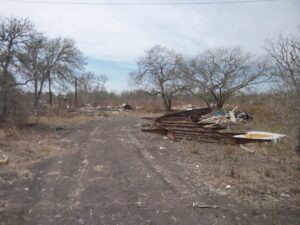
Another option to reduce illegal dumping is to hold periodic trash collection events at various locations within the watershed. There have been several cleanup events along CR 73 over the years. The City of Corpus Christi, Nueces County, Coastal Bend Bays and Estuaries Program (CBBEP), and TSSWCB have all contributed funds and/or in-kind services to the events. The last one took place in April 2013. The Nueces River Authority (NRA) will assist in coordination of future events as opportunities arise.
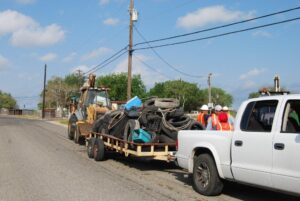
- Trash Can Lids at Hazel Bazemore Park: CBBEP provided funds for materials for 29 trash cans to be placed along the Nueces River in Hazel Bazemore Park in 2013. Nueces County provided the labor to install the cans. Loose trash was still an issue at the park due to nightly raids by raccoons. In 2018, Nueces County designed and installed lids on the trash cans.
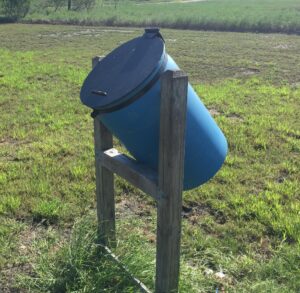
- On-site Sewage Facility (OSSF) Repair and Replacement: NRA received a federal Clean Water Act (CWA) §319(h) Nonpoint Source (NPS) Grant administered by the Texas Commission on Environmental Quality (TCEQ) from the US Environmental Protection Agency (EPA) to fund an OSSF inspection, repair, and replacement program.
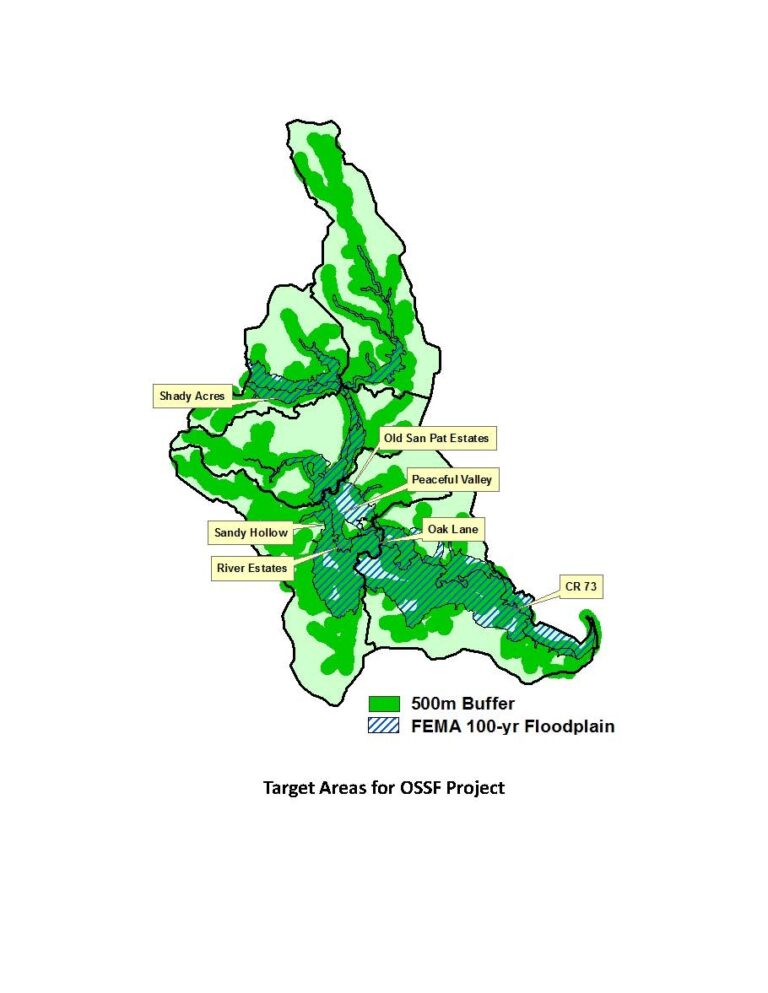
OSSF Conversion and Connections to the City Corpus Christi’s Wastewater System : There is portion of a neighborhood in the Calallen area, adjacent to the river and within the City of Corpus Christi city limits, that relies on OSSFs. These homes are also situated just upstream of the City’s water intake at the O. N. Stevens Water Treatment Plant. Many of the homes are a short distance, but downhill, from existing wastewater infrastructure. The goal of this management measure is to connect these homes to the existing infrastructure and remove the OSSFs.
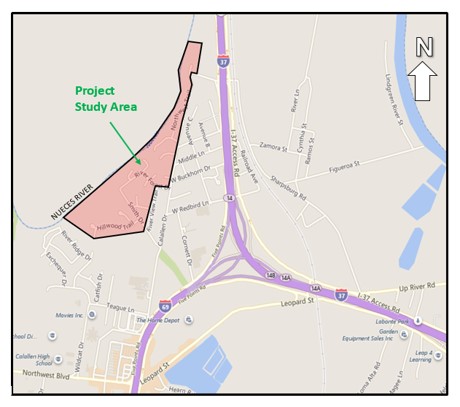
Implementation of this measure is a multi-phased approach. The first phase was initiated in December 2017 with NRA contracting with the City of Corpus Christi to develop a detailed plan and cost estimate for actual implementation. This work in being funded through a federal CWA §319(h) NPS Grant administered by the TCEQ from the EPA. The next phases will include identifying funding sources for construction, incorporating the work into the City’s work schedule, and actual construction.
A stakeholder meeting was held on July 19, 2018 to inform the area residents of the study.
To provide additional information for the conversion study, the City of Corpus Christi contracted with LNV Engeering to provide a snapshot of water quality for the Lower Nueces River from approximately River Ridge Drive northeast to the Cunningham Water Treatment Plant in the City of Corpus Christi district of Calallen. Water samples were collected on a weekly basis between March 1, 2019 and March 14, 2019 at tenth of a mile increments along the approximately one mile study area. Collected samples were analyzed for pH, E. coli, Nitrogen/Nitrates, Phosphorus/Phosphates, and TDS. LNV’s Report found all parameters, except TDS, meeting water quality standards.
A second stakeholder meeting was held on September 26, 2019 to present the final report and recommendations.
- Pet Waste Collection Stations and Leash Bag Holders: In 2017 the CBBEP funded the purchase of nine pet waste stations, 12 boxes of additional bags (2,000 bags/box), and 500 leash bag holders. Nueces County installed four of the stations at Hazel Bazemore Park and received 10 boxes of extra bags. San Patricio County installed two of the stations at La Fruta Park. Wilderness Lakes RV Park in Mathis installed two of the stations and received two boxes of extra bags. Tackle Box Bait and RV Park in Mathis installed one of the stations and received two boxes of extra bags. The leash bag holders are given away at outreach events.
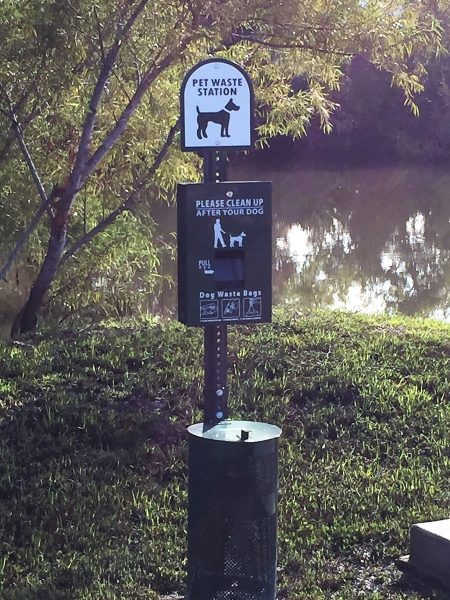
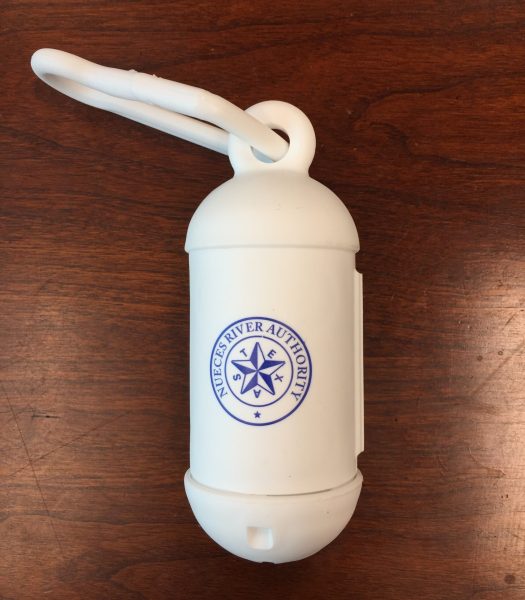
- Storm Water Retention Ponds: Storm water retention ponds have become a standard best management practice for new construction with large footprint of impervious cover. The cities of Corpus Christi (1%) and Mathis (83%) are the only larger cities that fall partially within the watershed. The City of Corpus Christi is required to have a Phase I Municipal Separate Storm Sewer System (MS4) permit due to its population being greater than 100,000, and it does have a city-wide storm water plan. The City of Mathis has a population of less than 5,000, which is below the threshold for a Phase II MS4.
- Municipal and Public Utility Districts / Wastewater Treatment Facilities: NRA conducted research on the feasibility of creating Municipal Utility Districts (MUD) or Public Utility Districts (PUD) to serve as wastewater treatment facilities for the communities relying solely on OSSFs.
MUDs are initiated by the homeowners. They require a petition requesting creation be filed with the TCEQ by a majority of the land title owners, or at least 50 land title owners if there are more than 50 land title owners. They must also have written consent from a city if they are within that city’s extraterritorial jurisdiction. The legal expense of requesting the MUD’s creation, developing the supporting documentation, finding funding for construction, and the operation and maintenance, is borne by the citizens. A MUD does have taxation authority. The communities that would benefit from a MUD most likely do not have the resources to implement this measure.
PUDs are created by a local government body, such as a city, county, or metropolitan service area (two or more communities joining together for public utility purposes), and they are non-profit. PUDs are often governed by a commission, which may be appointed or elected. None of the local governments have expressed an interest in implementing this measure.
Water Control and Improvement Districts (WCID) can also operate sanitary wastewater systems. The closest WCID is Nueces County WCID #3, but its jurisdictional boundary does not include any of these communities in the area.
Wildlife Management Measures
Texas Parks and Wildlife Department (TPWD) is the state resource agency charged with protecting and managing wildlife. They inform the public about wildlife, including hunting regulations; provide landowner incentives to manage for rare species; and provide technical guidance and assistance to private landowners in the development of wildlife management plans and conservation easements. Workshops to deliver this information to landowners will need to be coordinated closely with TPWD.
Feral Hog Management Measures
Feral hogs are a problem throughout the state. They cause millions of dollars of damage to crops every year and can be a major contributor to bacteria loading. Feral hogs cannot sweat, so they need access to water to cool themselves, making riparian areas a prime habitat. NRA has hosted several workshops which have included presentations on feral hog management: Texas AgriLife Extension’s Spring Ranch Field Day (May 2017), Texas Riparian & Stream Ecosystem Workshop (October 2017), and Lone Star Healthy Streams Workshop (April 2018).
Cleanup Measures
- Volunteer Cleanups: The Nueces River Preservtion Association (NRPA) has organized at least five cleanups of the river since 2012. The volunteers pick up trash and debris from boats and kayaks. NRA has assisted in these cleanups by providing supplies with funds from the TSSWCB and CBBEP grants. The City of Corpus Christi and Nueces County have provided in-kind services for disposal of the trash and debris.
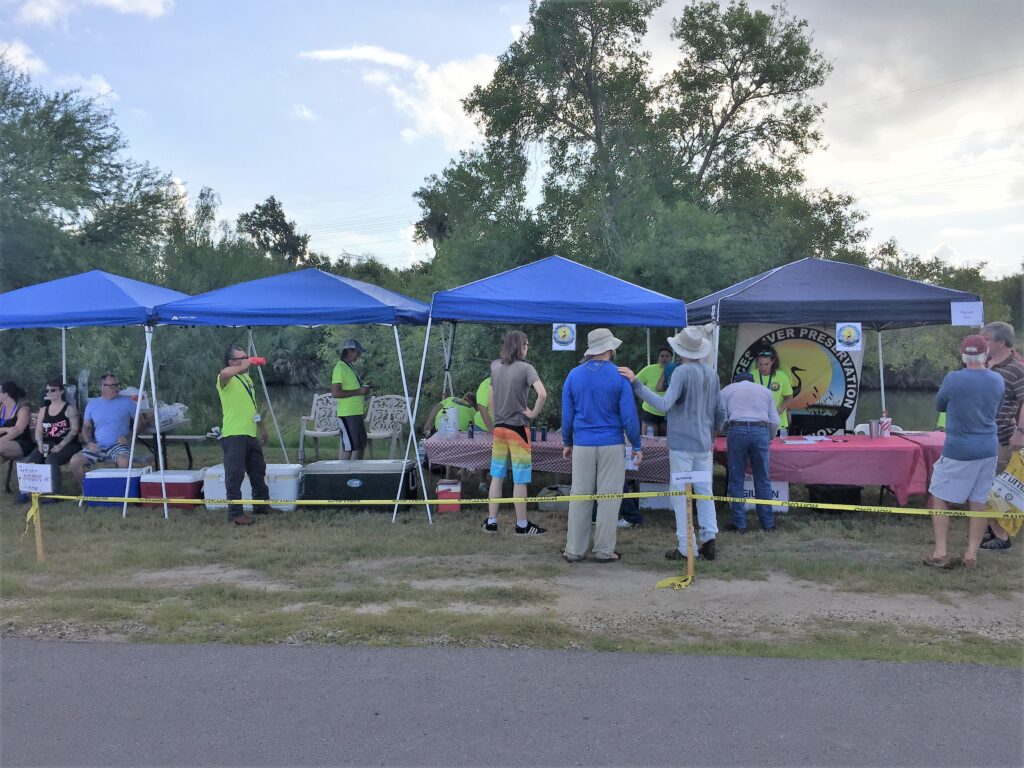
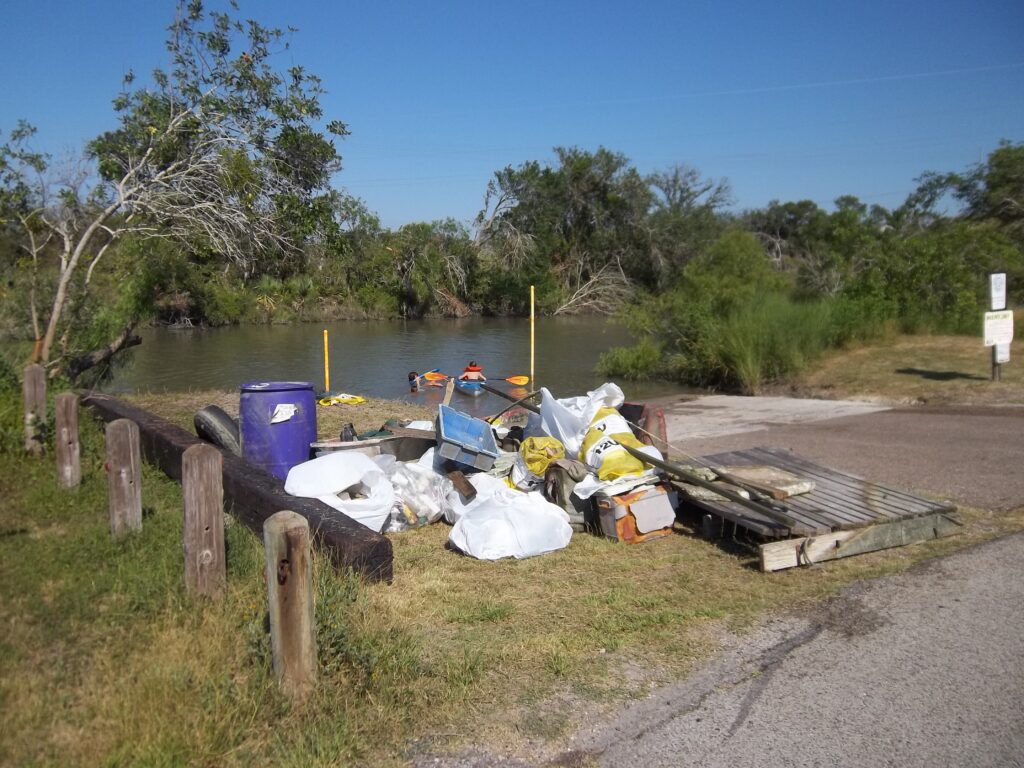
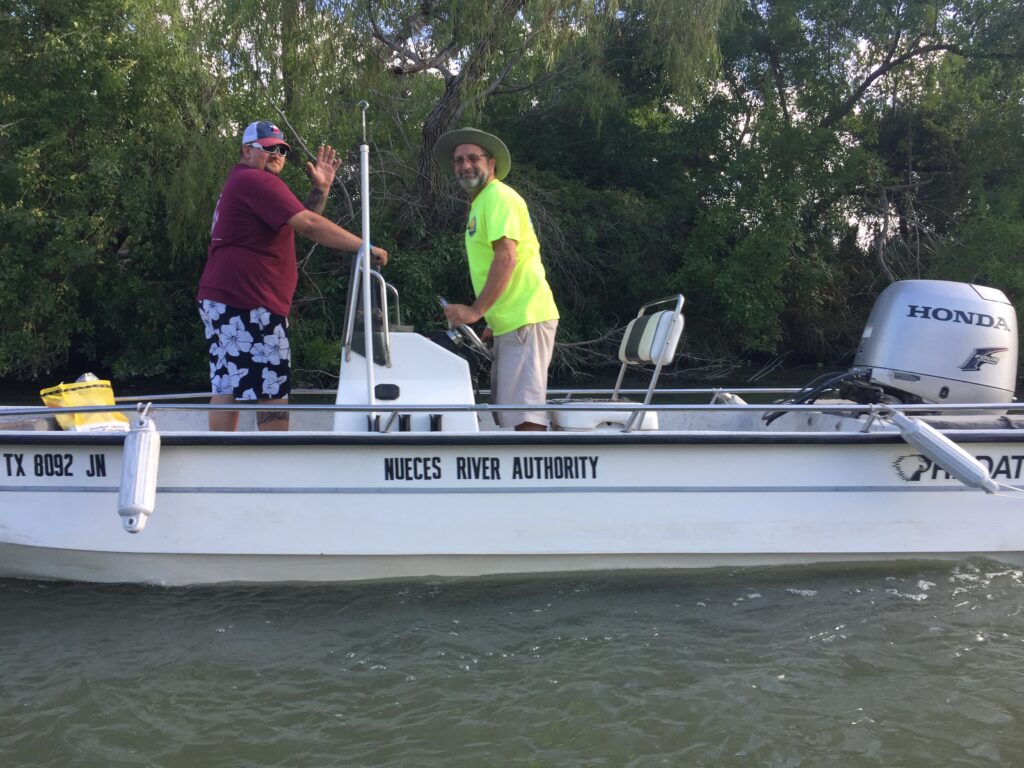
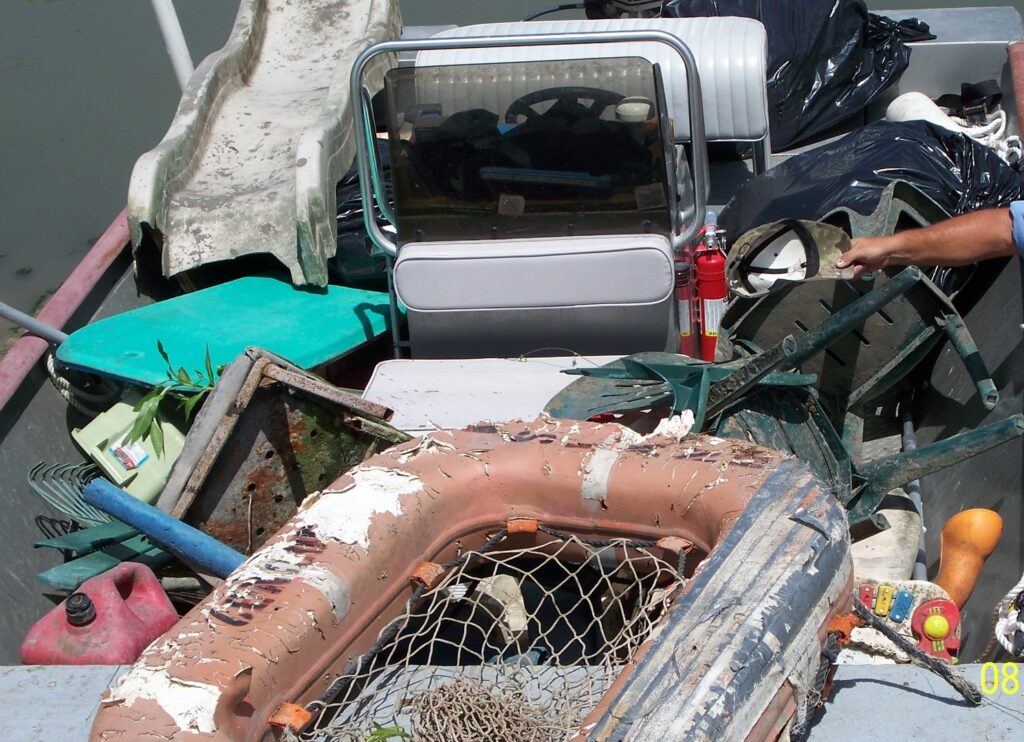
The NRPA founder, Tim McWha, is an AEP Texas employee. In 2016, AEP Texas filmed a number of commercials recognizing employees that have gone above and beyond to give back to their community. Tim was one of these featured employees. Here’s the link to the AEP Commercial.
The NRPA’s next cleanup is scheduled for July 13, 2019 at Hazel Bazemore Park. Visit the Nueces River Preservation Association FaceBook page for more information.
- Hyacinth Control: There have been reports over the years of parts of the Lower Nueces River being completely covered by water hyacinth. Weather conditions, such as hard freezes and floods, periodically reduce the infestations. Water hyacinth is problematic in that it increases the time required for water released from Wesley E. Seale Dam at Lake Corpus Christi to make its way to the fresh water intakes at the lower end of the river segment, its evapotranspiration can increase evaporative water loss, and it can be an impediment to recreation.
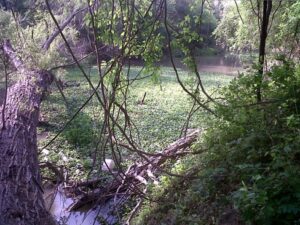
An aerial survey of water hyacinth on the Lower Nueces River in February 2015 was funded by the TSSWCB. One hundred twenty-five (125) colonies of water hyacinth were documented by photograph and their global positioning system locations recorded. Follow-up visits to several of these colonies revealed an average colony size of 1,120 sq. ft. Based on these observations it is estimated that approximately 3.21 acres of water hyacinth were present in the project area at this time.
The key to managing the hyacinth is to remove the source. An aerial survey was conducted of the upper end of Lake Corpus Christi and the Nueces River up to US 59 near George West. The upper extent of the hyacinth was identified near the confluence of an unnamed tributary, near Live Oak County Road 151, with the river.
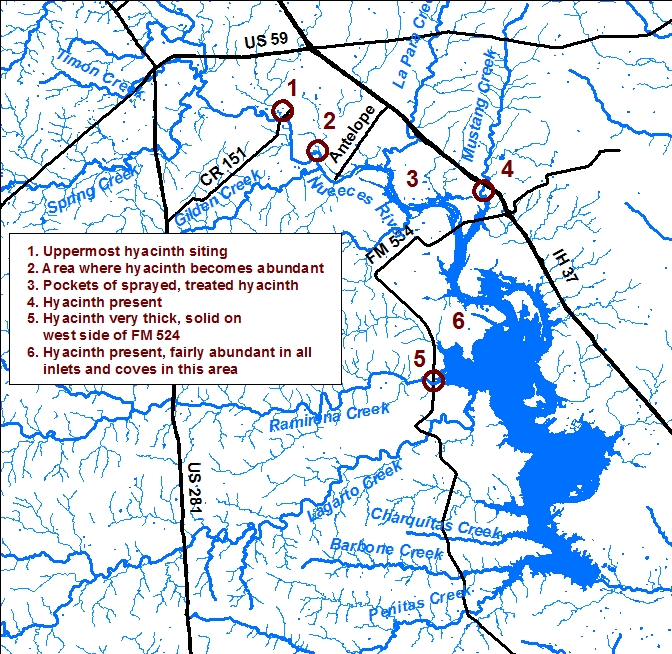
The City of Corpus Christi has authority to treat the hyacinth as far up the river as they can travel. The City works with TPWD to periodically treat the hyacinth. However, they are prohibited from spraying within one half mile of the City of Beeville’s water intake structure just downstream of FM 534.
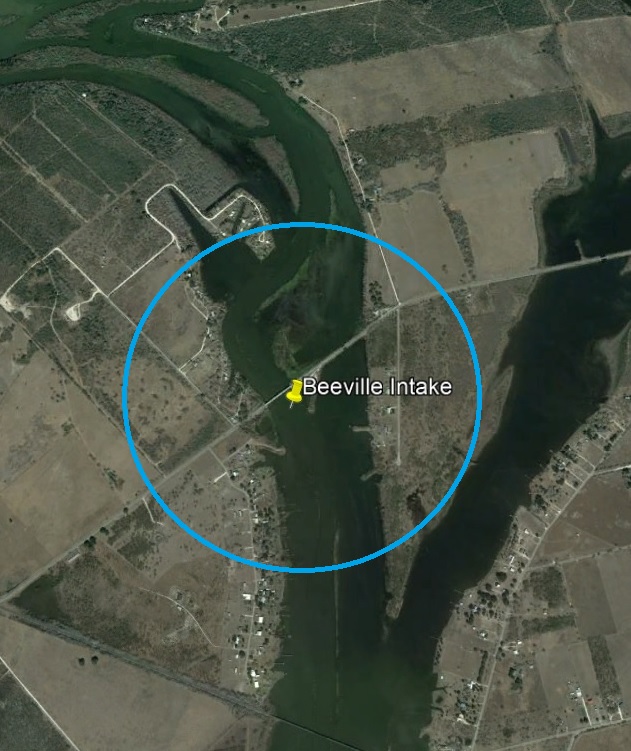
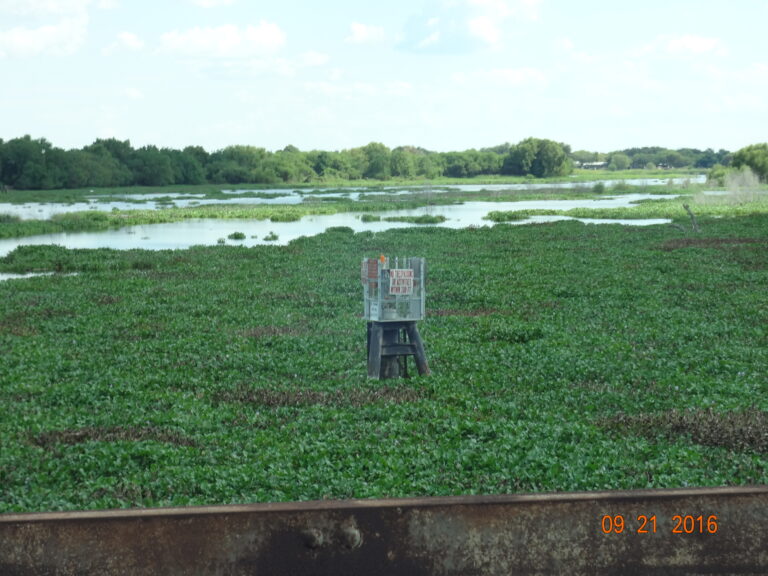
- Large Debris Removal: The identification of a leaking tar bucket during an investigation of an oil sheen on the Nueces River in 2003 resulted in an interest to further investigate what else was in the river. During development of the Lower Nueces River WPP, the NRA partnered with Texas A&M AgriLife Research Center at Blackland to conduct a side-scan sonar survey of the river in April 2014. This effort was funded by the TSSWCB.
The NRA worked with stakeholders and members of the NRPA to review the results of the survey and develop a list of objects to be removed from the river. The list consisted of 10 partially submerged boats and one collapsed pier. Other objects that were identified during the side-scan sonar survey were not considered to be recreation or navigation hazards, nor detrimental to water quality, and were better left undisturbed.
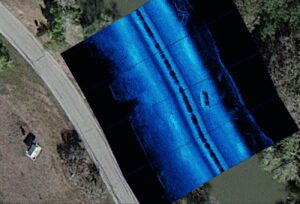
The success of the large debris removal was made possible by the collaboration of a number of entities. In addition to the TSSWCB and EPA funding of the side-scan sonar survey, the NRA utilized funding from a CBBEP grant to contract with J. M. Davidson Inc. to remove the boats and pier in May 2016. The NRPA spent their time and resources investigating and tagging, for the contractor’s benefit, items to be removed; the City of Corpus Christi Solid Waste Department provided a dumpster for the debris and its disposal; and the mobilization and demobilization expenses of the removal equipment were covered by Nueces County.
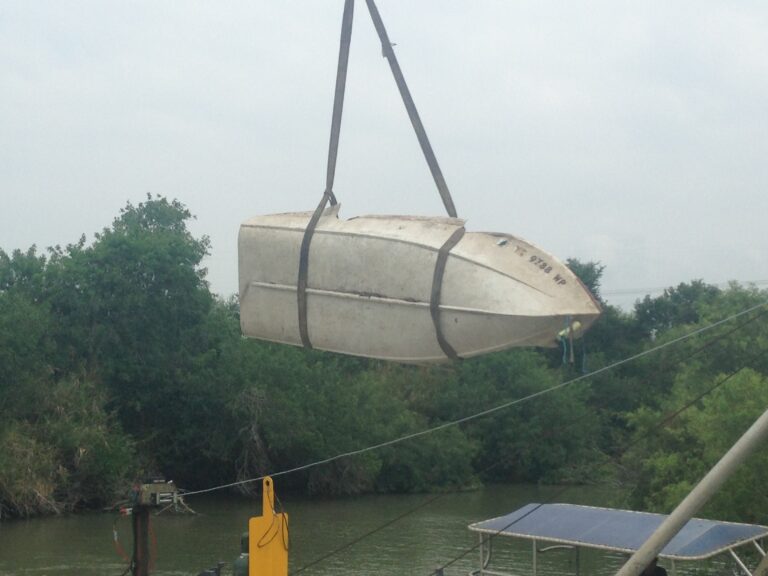
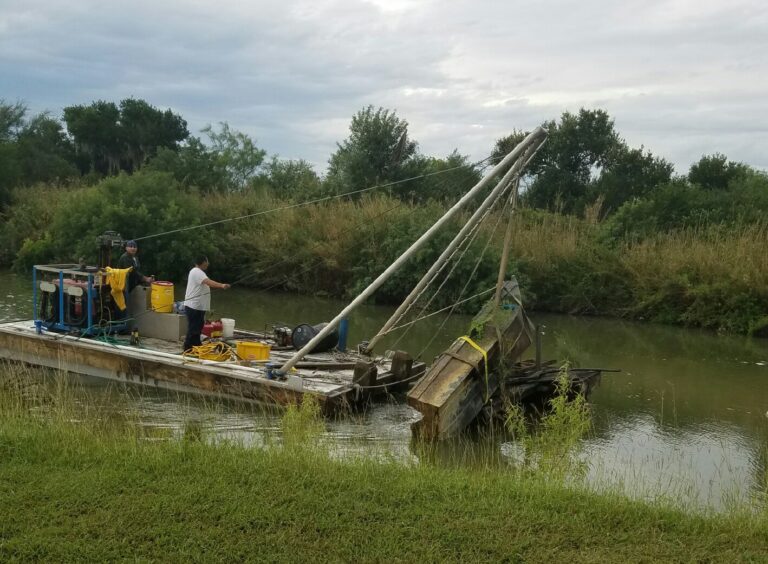
- Oil and Gas Well Plug and Abandon (P&A): There are numerous oil and gas wells located within the Lower Nueces River Watershed, many of which are active and connected to pipelines for product delivery. With respect to the inactive wells and no longer used pipelines, there exists the possibility of the improperly P&A’d wells, improperly shut-in pipelines, and / or leaking pipelines. This could result in seepage from the wells and pipelines, contributing to the total dissolved solids impairment. The Railroad Commission of Texas (RRC) is the regulatory agency over the oil and gas industry. For non-active wells and pipelines that are in need of being P&A’d or shut-in, the RRC will try and identify the responsible producer and require them to do the work. If the producer cannot be identified or found, RRC will perform the work as funding becomes available.
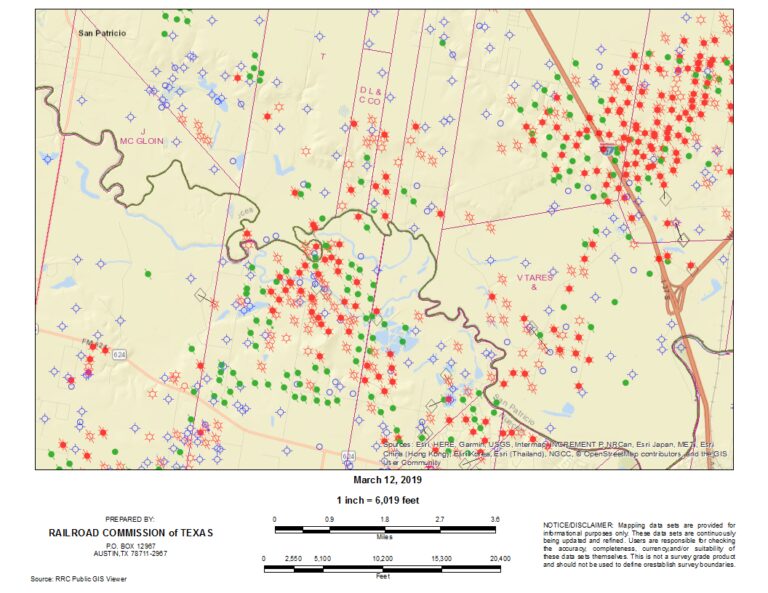
- NRA contacted the RRC to investigate the possibility of them conducting a survey of the area to determine the extent, if any, of improperly P&A’d wells and / or leaking pipelines. The RRC will respond to a request to inspect a specific complaint, but they are unable to conduct an overall general survey of the watershed.
![ph logo [Converted] ph logo [Converted]](https://nuecesriverpartnership.org/wp-content/uploads/elementor/thumbs/ph-logo-Converted-q1jkquzn62jq7kwzowajjcnc0igyp6fm3glvf44ahu.png)